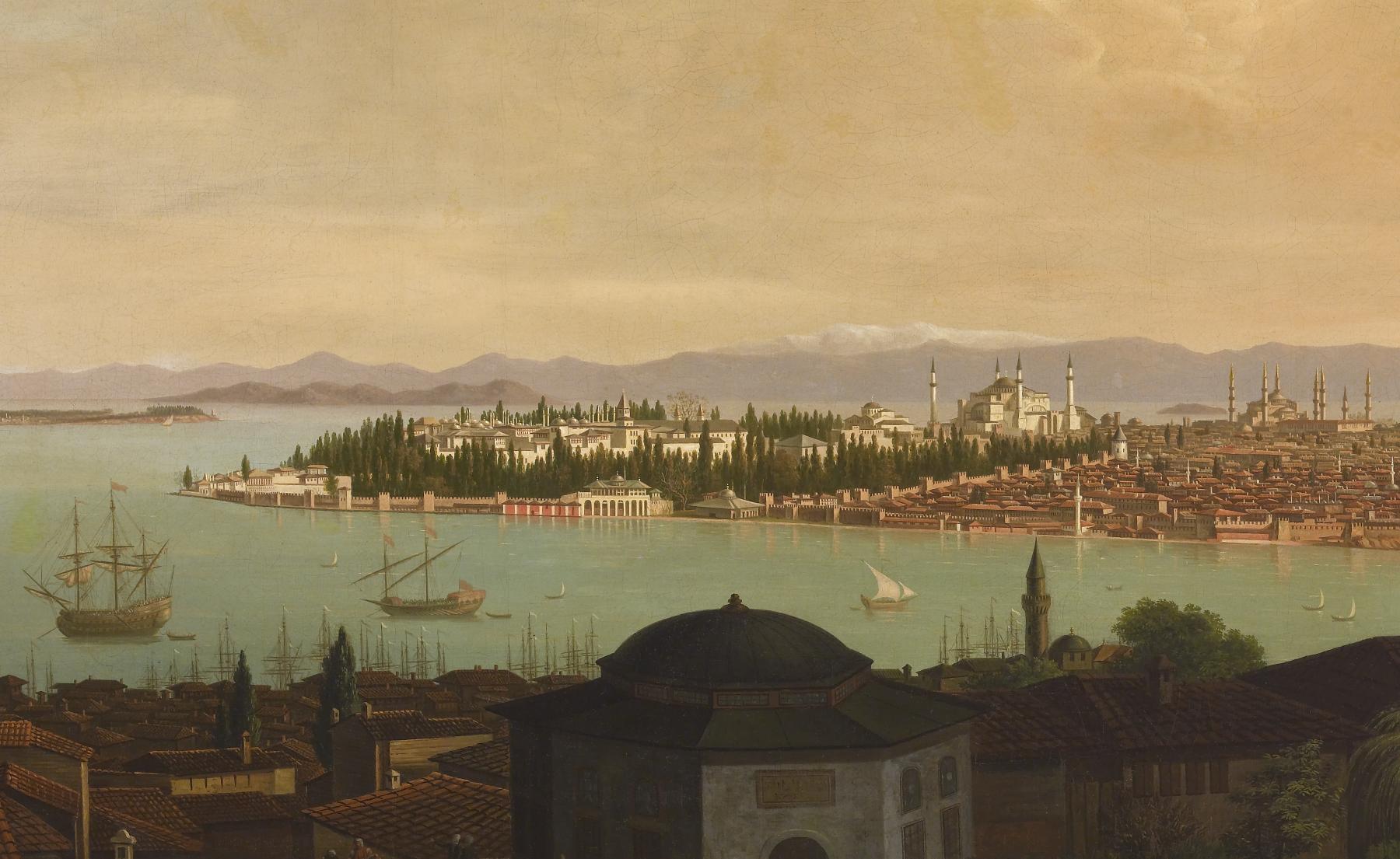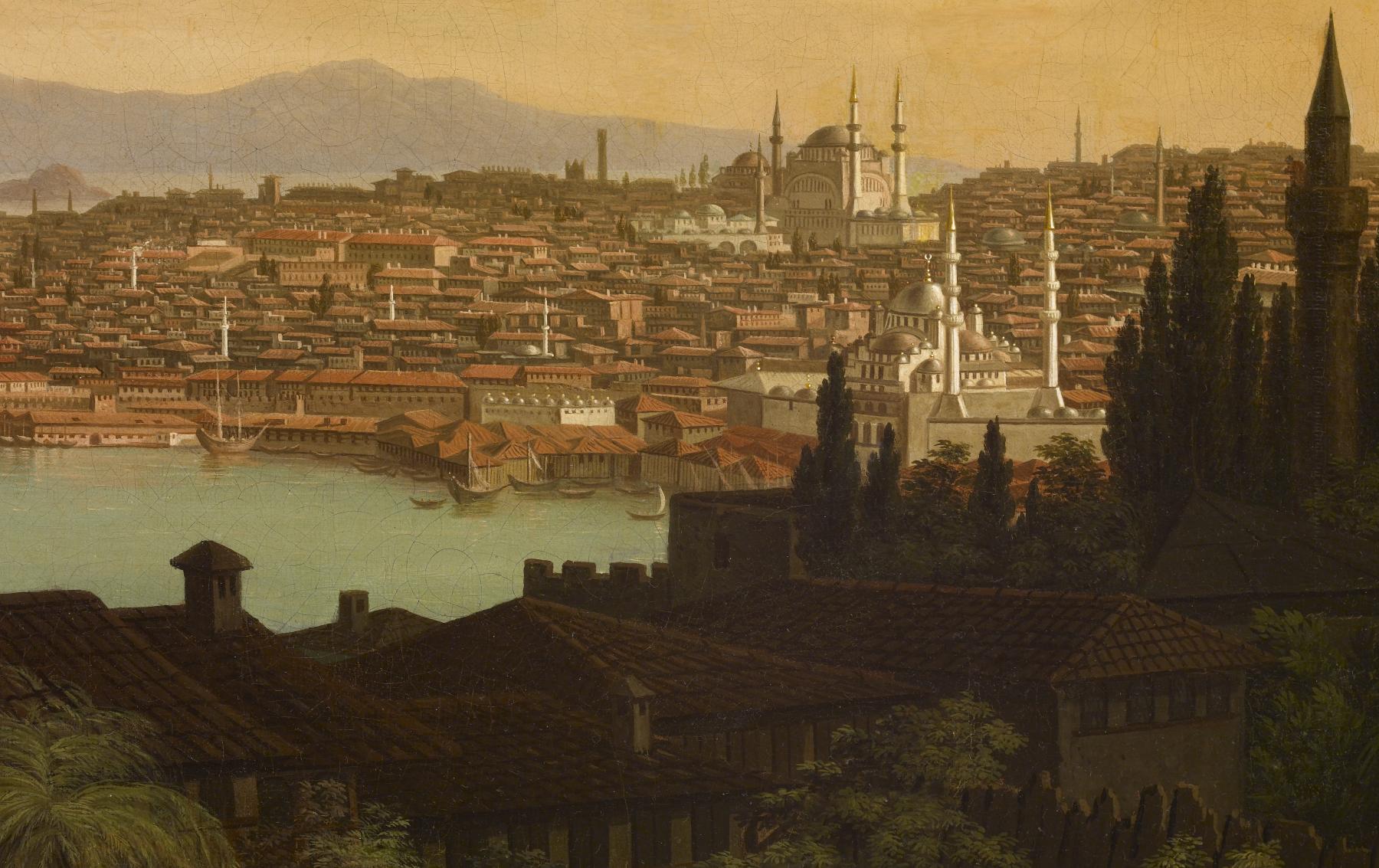heard of Constantinople? It’s a city with a rich history, one that’s been captured in stunning paintings over the centuries. I’m talking about the beautiful city that used to be called Constantinople, now Istanbul. It’s been a melting pot of cultures, and its captivating beauty has inspired countless artists, each with their own unique take on this magnificent city.
Let’s embark on a journey through time, shall we? We’ll dive into the world of paintings that showcase Constantinople’s grandeur and reveal its intricate story.

Byzantine Splendor: A Glimpse into a Lost World
Imagine this: a vibrant city brimming with life, adorned with glittering mosaics and opulent churches. That was Constantinople during the Byzantine era, a period that stretched from the 4th to the 15th century. The Byzantine style, characterized by its devotional Christian subjects, was all the rage. Think of paintings with flattened colors, gold accents, and angular figures. These paintings told stories of faith and spirituality, revealing the heart and soul of the Byzantine Empire.
A City of Contrasts: Capturing the Essence of Constantinople
In the 16th century, European artists were drawn to Constantinople like moths to a flame. They were mesmerized by the city’s beauty, its dramatic setting, and its exotic charm. They wanted to capture its unique character, its blend of old and new.
One of the most notable artists who painted Constantinople was Eugène Delacroix, a French romantic painter. His painting, “The Entry of the Crusaders in Constantinople,” depicts the arrival of the Crusaders in the city in 1204. The scene is one of chaos and conflict, with figures swirling in a frenzy of movement. This painting captures the city’s dramatic history, the clash of cultures, and the power struggles that shaped its destiny.
A City in Transition: Constantinople in the 18th and 19th Centuries

As we move into the 18th and 19th centuries, the focus of artists shifts. They’re now fascinated by the city’s transformation. Artists like Jean Baptiste Van Mour and Antoine de Favray travelled to Constantinople, their palettes ablaze with colors to capture the city’s changing landscape. The architecture, the streets, and the people – they were all transformed by the city’s growth and evolving cultural identity.
Take, for example, the “Fall of Constantinople” by Panagiotos Zografos. This painting, completed in 1836, depicts the fall of the city to the Ottoman Turks in 1453. This painting, with its rich colours and dramatic composition, evokes the city’s vulnerability, its resilience, and its enduring spirit.
Painting the Soul of Constantinople
Through these paintings, we can experience Constantinople’s history in its entirety. We see the city’s splendor during the Byzantine era, its tumultuous transition under Ottoman rule, and its transformation into the modern city of Istanbul.
What are some other ways that Constantinople has been captured in art? Tell me what you think!